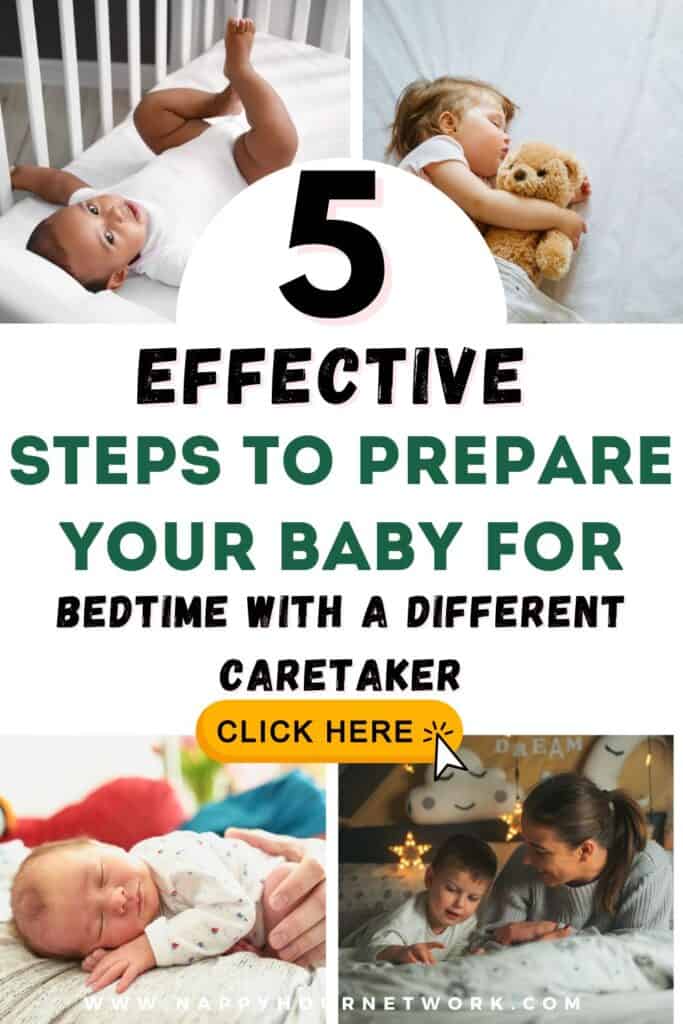How to Prepare Your Baby for Bed When You’re Out: A Stress-Free Guide for Parents
As a parent, it’s natural to feel a mix of excitement and anxiety about leaving your little one with a caregiver for a night out. For many, bedtime is one of the most sensitive and cherished moments of the day, and handing that responsibility to someone else can feel daunting. The good news is that, with the right preparation, both you and your baby can have a calm and stress-free bedtime routine, even when you’re not home.
In this guide, we’ll walk you through how to prepare your baby and babysitter for a successful bedtime. We’ll also cover the benefits of keeping your routine consistent and why it’s important for both you and your child to feel comfortable in this transition.
Understanding Bedtime Anxiety
It’s completely normal for parents to feel some level of anxiety about leaving their baby with a caregiver, especially if it’s for bedtime. According to the National Sleep Foundation, 60% of parents say that bedtime is one of the most stressful parts of their day. This stress can be amplified when you’re not the one in charge of getting your baby to sleep.
On top of that, babies are creatures of habit. Changes in routine—especially around bedtime—can cause disruptions in their sleep patterns. However, research has shown that babies thrive on consistency. A Harvard Health study found that infants with consistent bedtime routines were 50% less likely to experience nighttime awakenings and cried significantly less during the night.
By preparing both your baby and their caregiver in advance, you can reduce anxiety for everyone involved and help your baby transition smoothly to sleep, even in your absence.
Preparing Your Baby for Bedtime With a Caregiver
Preparation is key when it comes to ensuring a smooth bedtime routine with a caregiver. Babies, like adults, feel more secure when they know what to expect. Below are practical tips to prepare your baby for a bedtime handoff to a babysitter or caregiver.
1. Establish a Consistent Bedtime Routine in Advance
If you haven’t already, start establishing a consistent bedtime routine for your baby. This includes activities such as bath time, reading a book, singing a lullaby, or having a quiet cuddle before bed. By maintaining a consistent sequence of events, your baby will begin to recognize that these cues signal it’s time for sleep, regardless of who is putting them down.
2. Involve the Caregiver in the Bedtime Routine Beforehand
To ease your baby into the idea of someone else handling their bedtime, invite the babysitter or caregiver to observe and participate in the routine a few nights before your night out. Let your baby see that the caregiver is part of their trusted circle. This way, when you’re not there, your baby will already be familiar with them.
3. Create a Transition Plan
You might want to try short practice sessions where the babysitter watches your baby for brief periods while you’re out during the day. This helps your baby get used to someone else being in charge and makes the nighttime routine feel less jarring when you finally leave for the evening.
4. Leave Detailed Instructions
One of the most helpful things you can do is to leave a step-by-step guide of your bedtime routine for the caregiver. Include specific details like your baby’s favorite lullabies, their preferred sleeping position, or any comfort items they may need (like a blanket or stuffed animal). The more your caregiver knows, the smoother the transition will be.
5. Be Consistent But Flexible
Encourage the caregiver to follow your routine closely, but also remind them that it’s okay if everything doesn’t go exactly to plan. Babies can be unpredictable, and flexibility is often needed when trying to get them to sleep.
Building a Baby-Friendly Sleep Environment
Creating a soothing sleep environment is crucial to help your baby settle down for the night, especially when someone else is putting them to bed.
1. Maintain a Consistent Sleep Space
Ensure the caregiver knows how to recreate your baby’s usual sleep environment. Keep the room at a comfortable temperature, around 65-70°F (18-21°C), which is considered ideal for baby sleep according to the American Academy of Pediatrics (AAP). Make sure the lights are dimmed, or use blackout curtains if necessary.
2. Use White Noise or Soft Music
If you use white noise or soft music to help your baby sleep, make sure the caregiver knows how to turn it on. White noise machines or apps can help drown out household sounds and create a calming atmosphere for sleep.
3. Follow Safe Sleep Guidelines
Remind the caregiver to adhere to safe sleep guidelines. According to the AAP, babies should always be placed on their backs to sleep in a crib or bassinet free of pillows, blankets, or stuffed toys to reduce the risk of sudden infant death syndrome (SIDS). Ensuring a safe sleep environment will not only help your baby sleep more soundly but will also give you peace of mind while you’re out.
Handling Nighttime Wake-Ups
Nighttime wake-ups are inevitable for many babies, and it’s important to prepare your babysitter to handle them calmly and effectively.
1. What to Do If Your Baby Wakes Up
If your baby wakes up in the middle of the night, the babysitter should try to soothe them back to sleep without immediately picking them up. This might involve softly shushing, gently rubbing their back, or simply offering their pacifier.
2. Remain Calm and Consistent
Babies are very intuitive and can sense when a caregiver is anxious. Encourage the babysitter to remain calm and follow your established nighttime routine. Consistency is key here—repeating familiar soothing techniques will help your baby feel secure, even in your absence.
3. What If Things Don’t Go According to Plan?
If your baby has difficulty settling back down, it’s okay for the babysitter to adjust the routine slightly. Some babies may need a bit more comfort from the babysitter if they’re upset, but overall, sticking to the familiar routine as much as possible is the best approach.
Addressing Your Own Anxiety About Leaving
As parents, it’s natural to feel nervous or guilty about leaving your baby for a night out, especially when it involves bedtime. However, it’s important to recognize that taking time for yourself can actually benefit your family in the long run.
1. Check in if Needed
If you’re feeling especially anxious, it’s okay to check in with the babysitter via text or video call. A quick update can ease your nerves and help you enjoy your evening.
2. Use Video Monitors
If you have a video baby monitor, you can always check in to see how your baby is doing. But try not to obsessively check! Trust in the preparation you’ve done and let the caregiver manage the situation.
3. Embrace Self-Care
Remember, parents need self-care too. Studies have shown that parents who take time for themselves, including the occasional night out, report lower levels of stress and a greater sense of balance in their family life. This is good for both you and your baby.
FAQ Section
1. What if my baby refuses to go to bed with a babysitter?
It’s common for babies to resist changes in their routine. Ensure that your babysitter follows your usual bedtime routine closely. It may take a few tries, but consistency usually helps.
2. How can I ensure my baby will feel comfortable with someone else putting them to bed?
Involve the babysitter in your baby’s routine beforehand and practice short separations during the day. The more familiar your baby is with the babysitter, the smoother bedtime will be.
3. What if the babysitter doesn’t follow my bedtime routine exactly?
It’s okay if things don’t go perfectly. While consistency is important, it’s also essential to allow some flexibility. Trust that your baby will adapt over time.
4. How do I handle nighttime wake-ups when I’m not home?
Make sure your babysitter is prepared for potential wake-ups by providing instructions on how to soothe your baby back to sleep. Encourage them to remain calm and follow your usual nighttime routine.
5. Is it okay for my baby to cry when I’m away?
It’s natural for babies to cry when they sense a change in their routine, but this doesn’t mean they won’t be okay. Give your baby time to adjust, and trust that the babysitter is equipped to handle the situation.
Leaving your baby with a caregiver for bedtime doesn’t have to be a stressful experience. By preparing in advance, establishing a consistent routine, and trusting your babysitter, you can ensure a smooth bedtime even when you’re not there. Remember, taking time for yourself is an important part of being a parent, and it benefits your whole family in the long run. Enjoy your night out, knowing that your baby is in good hands.









